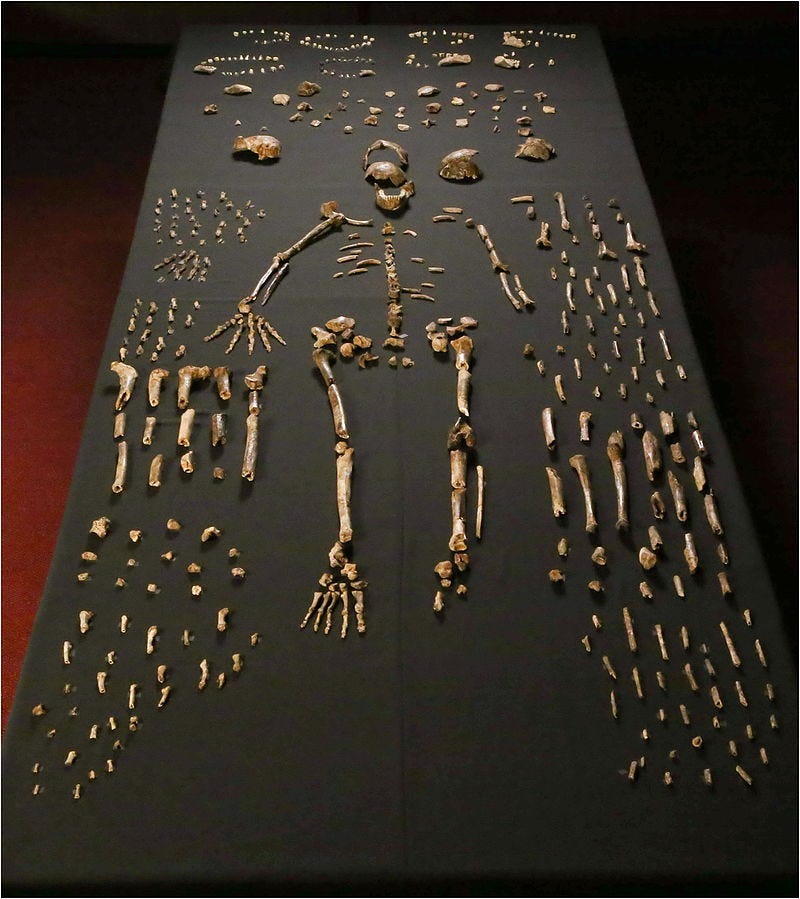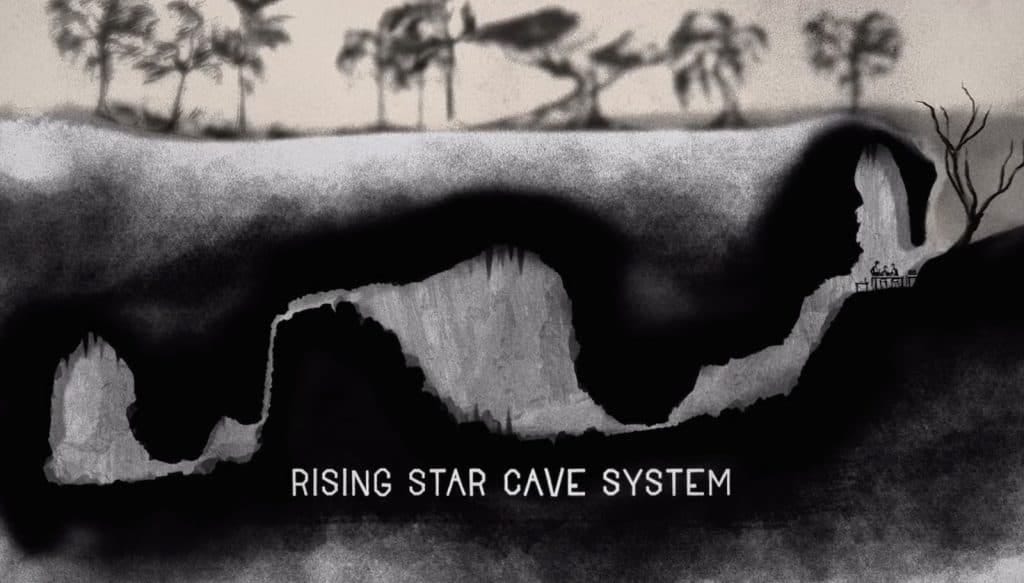If you are looking for something to watch this weekend, I highly recommend ‘Unknown: Cave of Bones’. It is a fascinating story about a recent discovery which changes our views on Homo sapiens’ extinct ancestors. The findings highlight how little we know about our past. I had not heard about the discovery before and so for those who won’t watch the show, here is a short summary.
In 2013, the scientific community was jolted by a groundbreaking discovery deep in the South African landscape, where an expedition led by renowned paleoanthropologist Lee Berger unfolded an untold chapter in the narrative of human evolution. In the confines of the Rising Star Cave system, a remarkable find was made - skeletal remains of an unknown species. This was the dawn of our acquaintance with an ancient hominin known as Homo naledi.
Homo naledi means ‘star man’ after the cave system in which it was found. In total, they excavated approximately 1,500 Naledi bones, representing around 15 individuals.
According to Berger, the species existed between 236,000 to 335,000 years ago, sharing the planet with early humans. These ancient beings harboured a peculiar resemblance to us, yet their brain size was notably smaller. Standing at around five feet tall and weighing around 40kg (88 lb), their feet and parts of their skull were very similar to ours. They also possessed small canine teeth, again similar to our own.
Whilst the discovery itself was incredible, initially Berger and his team thought that the cave was just a body dumping ground. Similar perhaps to something you might find with other primates. However, a later discovery challenged this.
It seemed that despite the smaller sized brain, the Homo naledi demonstrated behaviours startlingly similar to modern humans, challenging the conventional borders of what it means to be human.
Among the evidence that points to their human-like traits is the hypothesis that they engaged in the ritualistic burial of their dead. This, as anthropologist Agustín Fuentes posits in the film, was previously unheard of for such an ancient species. But the cave system, in the Cradle of Humankind, bore signs of what seemed like a burial ground. Homo naledi, it appears, braved the challenging cave system's confines, risking life and limb, to ensure their dead found rest in these subterranean depths.
You can see how dangerous the journey was in the diagram below. The simplified illustration of the cave shows the entrance to the cave on the right before a tight squeeze through a section called ‘Superman’s Crawl’. This narrow passageway leads to the large central chamber called ‘Dragon’s Back Chamber’. However, the journey gets even harder from then on. After a steep climb, there is a narrow, 12 metre chute down which only slender humans can fit through. All of this was done whilst carrying the dead. There is no other way to reach the burial area.
Furthermore, this was all done in the pitch black, leading the scientists to conclude that the Naledi had mastered fire. In fact, during one of their digs, they found an old fire pit with evidence of food having been cooked on it.
One of the most poignant scenes in the show features the unearthing of a child Homo naledi’s skeletal remains. Alongside the bones, a rock fashioned into a tool emerges - hinting at the deliberate process of burial. The stone tool had been placed in the child’s hands whilst being buried.
Not only were the Naledi using tools but they had enough of them to bury them with their dead. The tool also suggests that the Naledi had some concept of an afterlife because why else would they leave an item, which would have taken weeks to make and which could be used again, with a dead body.
To put this into perspective, the earliest evidence that we have found of humans burying their dead is from 100,000 years ago. The Naledi were undertaking similar procedures at least 150,000 years before this. It could potentially be even older still because originally the fossils were dated to 1-2 million years ago.
This fascinating programme reveals that other species shared human traits. They felt the pain of losing a loved one and were unable to watch the bodies rot away. Instead they partook in ritualistic burials, something only ever seen in humans. Furthermore, the Naledi may have been thinking about what happens after death and in doing so, provided a tool for their dead child to survive when reborn.
A must watch!






Werner Herzog's 'Cave of Forgotten Dreams' was great.
This adds to that fascination as these beings were seperate species maybe.
Cheers, nice rec :)
I'm always amazed at the sense of certainty there is about our history. There are even good reasons to doubt the stories we have from the first millennium.